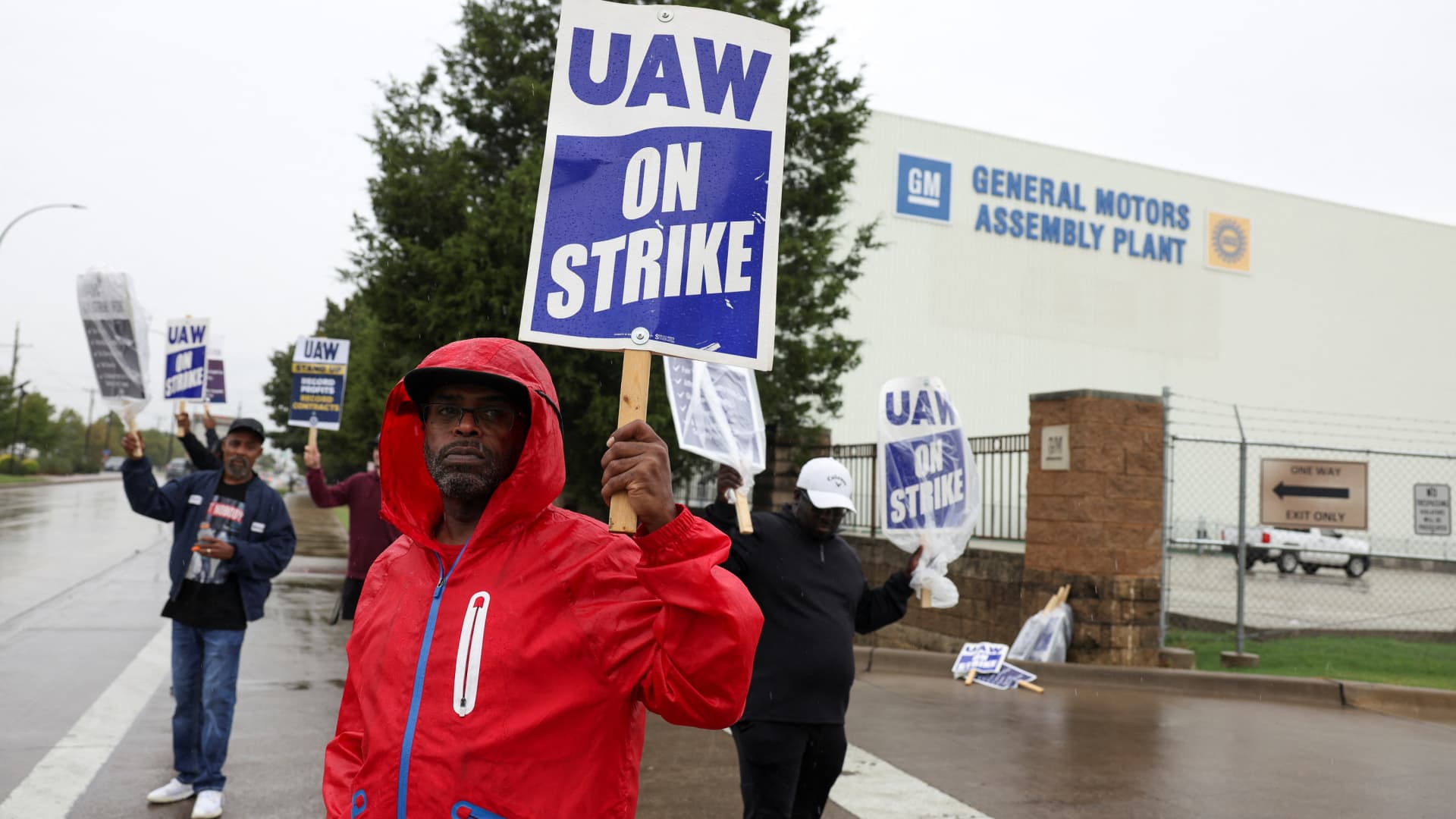
DETROIT —The United Auto Workers union and Stellantis have agreed to a tentative deal following roughly six weeks of targeted U.S. labor strikes, the union announced on Saturday.
The agreement, which must still be approved by local union leaders and ratified by members, is patterned off a 4½-year agreement reached between the union and Ford Motor on Wednesday.
Meanwhile, while there had been hopes the UAW would soon reach a similar deal with General Motors, on Saturday the union expanded its strike to an additional GM assembly plant in Spring Hill, Tennessee. “We are disappointed by GM’s unnecessary and irresponsible refusal to come to a fair agreement,” UAW President Shawn Fain said in a statement.
GM did not immediately respond to a CNBC request for comment.
Fain was with Stellantis in intense talks Thursday and Friday before turning his attention to GM. UAW and GM had been expected to resume talks on Saturday, according to a source familiar with the talks.
The UAW held a meeting early Saturday afternoon with local Stellantis union leaders following the sides agreeing in principle to the terms of a deal.
“Once again, we have achieved what just weeks ago we were told was impossible,” Fain said in a statement. “At Stellantis in particular, we have not only secured a record contract, we have begun to turn the tide in the war on the American working class.
The tentative agreement, which would still need to be approved by union leaders and ratified by members, is patterned off a 4½-year agreement reached between the union and Ford Motor on Wednesday, sources previously told CNBC.
Bloomberg News first reported Saturday the company made additional concessions to the UAW and the union aims to announce a tentative agreement this afternoon that includes a new product for an idled assembly plant in Illinois.
“Through the power of our Stand Up Strike, we have saved Belvidere,” said UAW Vice President Rich Boyer. “Eight months ago, Stellantis idled Belvidere Assembly Plant, putting 1,200 of our members on the street. From the strength of our strike, we are bringing back those jobs and more.” He added that Stellantis is reopening the plant and the company will also add more than a thousand jobs at a new battery plant in Belvidere.
“I want to applaud the UAW and Stellantis for agreeing to immediately bring back all of the Stellantis workers who have been walking the picket line on behalf of their UAW brothers and sisters,” President Joe Biden said in a statement following the contract announcement.
The deal comes after the union reached an agreement on Wednesday with Ford. That agreement still needs to be approved by union leaders and ratified by members.
The tentative agreement is expected to end six weeks of targeted labor strikes by the union after the sides failed to reach new deals for 146,000 UAW members before a Sept. 14 deadline. The union called back more than 16,000 striking Ford workers after reaching a tentative deal with the automaker.
Ford’s deal included 25% pay increases over the term of the agreement, including an initial increase of 11%. The raises and benefits cumulatively raise the top wage to more than $40 an hour, including an increase of 68% for starting wages to over $28 an hour.
It also reinstated cost-of-living adjustments, reduced an eight-year path to top wages to three years and allowed the right to strike over plant closures, among other significantly enhanced benefits.
The strikes have collectively cost GM, Ford and Stellantis billions of dollars in lost production. Ford said Thursday that the union’s strike has cost it $1.3 billion and the deal, if ratified by members, would increase labor costs by roughly $850 to $900 per vehicle produced.
GM said Tuesday the strike had cost it about $800 million.
The proposed agreements are record-setting for the union, which was far more confrontational and strategic during the talks than in recent history.
The union initiated negotiations with all three automakers at once, breaking from recent history when UAW leaders would bargain with each automaker individually, select a lead company to focus efforts on and then pattern the remaining deals off a leading tentative agreement.
It’s not immediately clear how much the labor deals will increase labor costs for the companies, which had argued that giving in to all of the union’s demands would affect their competitiveness and even long-term viability.
Deutsche Bank recently estimated the overall cost increase of the agreement at Ford to be $6.2 billion over the term of the agreement; $7.2 billion at GM; and $6.4 billion at Stellantis.







